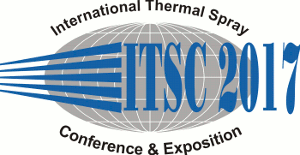
|
5362 |
|
Deposition of innovative hardmetal coatings by HVAF and HVOF processes |
|
Giovanni Bolelli / Department of Engineering "Enzo Ferrari", University of Modena and Reggio Emilia, Italy Hanna Myalska / University of Modena and Reggio Emilia, Italy Riccardo Bultrini/ Department of Engineering Enzo Ferrari , University of Modena and Reggio Emilia, Italy Christophe Lyphout/ Production Technology West, University West, Sweden Luca Lusvarghi/ Department of Engineering Enzo Ferrari , University of Modena and Reggio Emilia, Italy Pietro Puddu/ Department of Engineering Enzo Ferrari , University of Modena and Reggio Emilia, Italy Rinaldo Rigon/ Ecor Research SpA, Italy Kazuto Sato/ Fujimi Inc., Japan Paolo Sassatelli*/ University of Modena and Reggio Emilia, Italy |
|
The interest has recently been growing to study non-conventional hardmetal compositions, which could offer improved wear and corrosion resistance performances over traditional WC-Co(Cr) and Cr3C2-NiCr compositions and possibly feature a reduced content of elements (e.g. W, Co) which are economically critical and/or hazardous for health and safety. Three experimental, agglomerated and sintered feedstock powders with compositions (in wt.%) WC-20%WB-12%Ni, (Ti,Mo)(C,N)-29%Ni and MoB-CoCr were processed by three distinct, high kinetic energy-type thermal spray processes, namely: High-Velocity Air Fuel (HVAF) spraying (M3 torch); gas-fuelled High-Velocity Oxygen Fuel (HVOF) spraying (Diamond Jet 2600 Hybrid torch with hydrogen fuel); liquid-fuelled HVOF spraying (JP5000 torch with kerosene fuel) spraying. All coatings were deposited onto carbon steel substrates. The microstructure, phase composition and hardness of the coatings were characterized by (FEG)SEM+EDX, XRD and Vickers microindentation techniques, respectively. Their corrosion resistance was characterized by electrochemical polarization testing as well as by a cabinet test (Corrodkote test, according to ASTM B380-97) with periodic visual inspection. The dry sliding wear behaviour was investigated at room temperature and at 400 °C by rotating ball-on-disk testing, using Al2O3 spheres as counterbody. Wear rates were compared to previous results obtained under identical test conditions on |